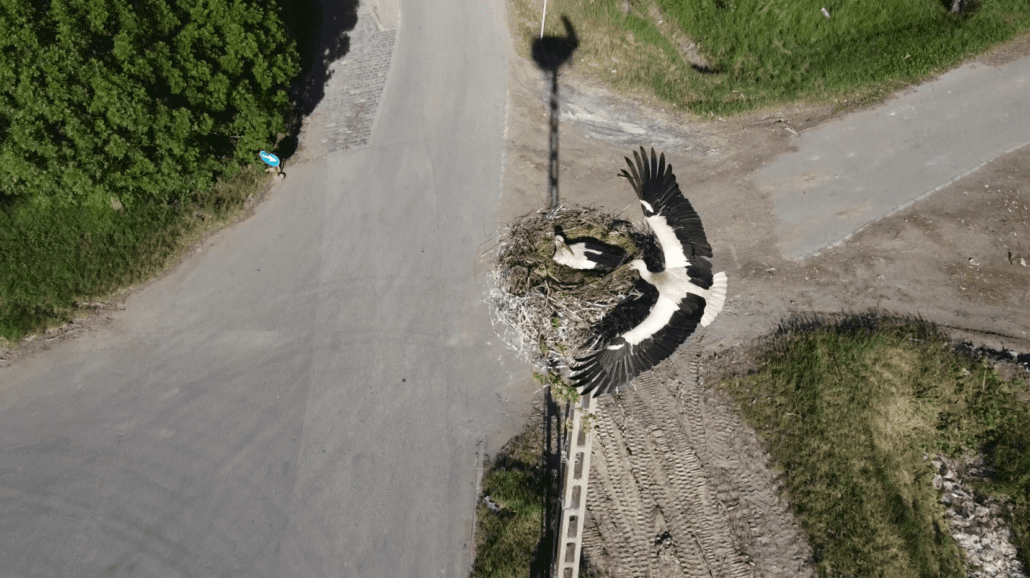More than 20 white stork pairs can nest safely at Pest County’s largest landfill
The Regional Waste Management Centre in Pusztazámor is a veritable stork colony, with more than 20 pairs of storks nesting there this year. Now, the site is safer for the birds after E.ON’s replacing of the overhead lines there with underground cables. The investment also benefits the large-bodied guests of the special feeding and nesting site, the protected white storks and other birds.
Seagulls, crows, bee-eaters, kestrels, sand martins as well as numerous white storks feed and nest at the Pusztazámor Waste Treatment Plant, the country’s largest landfill. The 55-hectare facility on the outskirts of Budapest has been a harbour for birds since it opened, offering them a banquet all year long. Even the particularly rare black stork is seen occasionally there, showing how this secure food source is even more attractive than their original home in the undisturbed floodplain forests, especially during drought periods.
The landfill site’s natural characteristics were apparent from the first stork nests that appeared in its first year of operation. Today, the extensive meadows and wetlands, fish ponds and the proximity of the Danube and several canals make the Zámor deposit a unique habitat within Europe, rich in species. Last year, 24 pairs of white storks nested on the tops of utility poles and compost heaps, resulting in more than 60 chicks being raised by the pairs. The national park’s experts tag the hatchlings each summer. During the flocking period before the autumn migration, up to 200 storks stay on the site at a time, and some even spend the winter in Pusztazámor. As for the other bird species, sometimes 2-3,000 black-headed gulls feed in the area at the same time, and large flocks of rooks and jackdaws also arrive in autumn and winter.
Medium-voltage power lines there were the only thing that prevented larger birds from flying in and out. Following E.ON’s investment this spring, only underground cables are now present in the area with the greatest level of bird activity.
E.ON experts, in cooperation with the Danube-Ipoly National Park Directorate, paid special attention to the interests of birds during construction. The power lines’ cross supports were left in place to serve as nesting and perching sites for the storks. The gesture of deliberately clearing out the wires in March (before nesting) seems to have been appreciated, as the cross supports, now a safe place to brood and raise young, have been invariably occupied by pairs of storks. The development also benefits people living in the area, who will no longer experience frequent power cuts caused by the nesting activity of storks, due to branches falling on the power lines. The supply of power to the area will be more stable and reliable, also a boon for the landfill’s operation.



